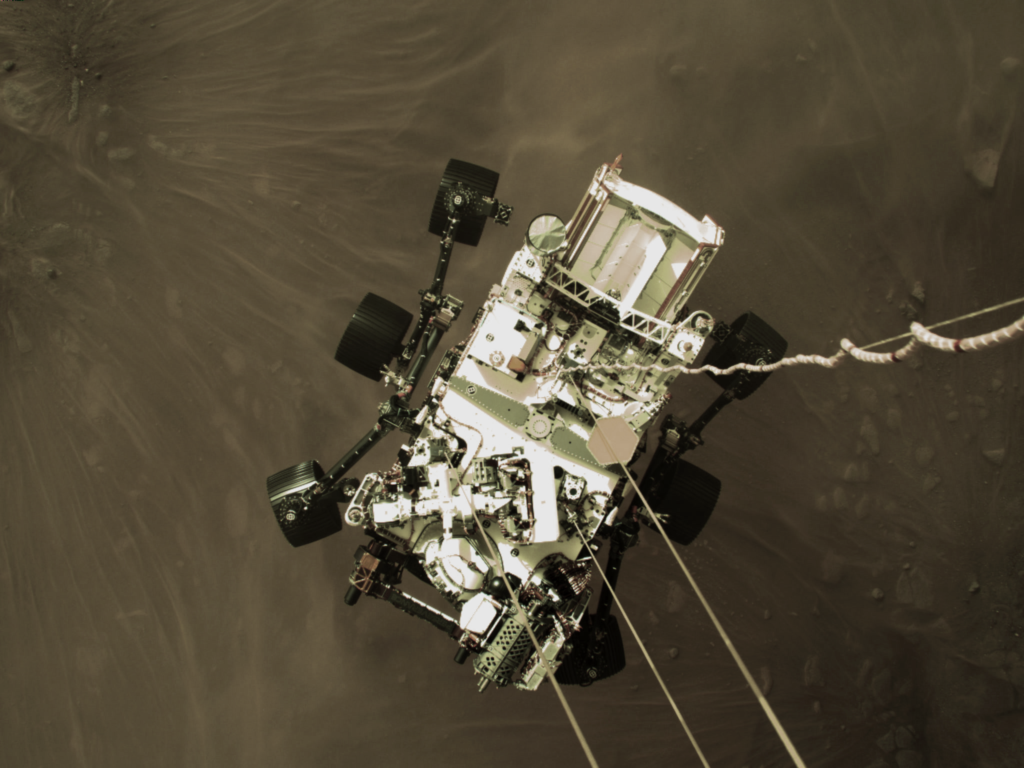As appearing in ENGR.Source.colostate.edu | March, 2021 | by Andrea Leland
Five questions with ECE alum Robert Beauchamp, member of Perseverance mission team
Robert Beauchamp is an alumnus of the Department of Electrical and Computer Engineering at Colorado State University. He earned his Ph.D. in 2016 under the guidance of Professor V. Chandrasekar, and served as a researcher in the department’s radars laboratory.
As a team member of the Mars 2020 mission that landed the Perseverance rover on Feb. 18, 2021, Beauchamp is the test lead for the Terminal Descent Sensor, a six-antenna radar used to measure the range and velocity of the landing system relative to the surface during the last phase of entry, descent, and landing, or EDL.
We asked Beauchamp to share his thoughts on the mission, reflect on his educational experience at CSU, and offer advice to aspiring engineers.
Q: When the Perseverance rover touched down safely on Mars this February, it was a historic moment for our country and science. As an engineer working on the mission, what does this great achievement mean to you personally?
A: This was the first spaceflight mission and my first project at NASA’s Jet Propulsion Laboratory, California Institute of Technology. While the “skycrane” landing technique was demonstrated in 2012 by the landing of the Curiosity Mars rover, landing on Mars is always challenging. After confirmation that it was safely on Mars’ surface, there was a sense of relief, and now a new science mission to explore Mars can really begin.

For the first time, this landing was recorded in full-color video and we documented the final minutes of the landing. After contemplating cartoon diagrams of how the system will work, analyzing test data and simulation of the radar operation during EDL, to see it in color – not just imagining it or seeing computer renderings – really helped make it tangible. After the lander touches down, the bridle is cut, and the descent vehicle flies away. The last piece of the descent vehicle to leave the frame as the dust clears is the radar that I worked on.
Q: What do you find most surprising, exciting, or important about this mission?
A: The mission is the first step in a planned multi-mission campaign to return samples to Earth. Perseverance’s successful landing is just the start to potentially bring a piece of Mars back to Earth.
Q: Are there any misconceptions about the mission that you would like to clarify for readers?
A: Many people think we drive the rover over the surface of Mars. Due to the time it takes for the radio signals to reach Mars – five to 20 minutes – a team of talented people plan the rover’s tasks for each day. This plan is uploaded to the rover, which it executes autonomously, and sends reports back to the team on Earth to use in planning the next day’s events.
Q: How well did your experience at CSU prepare you for your current position?
A: CSU provided me my first opportunity to work with radar systems. Having the chance to experiment with the weather radars provided a hands-on way to connect the textbook electromagnetic theory and signal processing to physical electronics and microwave systems. Deploying and operating weather radars in the field and then processing and analyzing the data was essential to a deeper understanding of how radars work, and more importantly, how can we use them to explore and learn more about our world – and other worlds of the Solar system. The diversity of opportunities I had at CSU, and the flexibility to explore interests and develop new ideas, was a great personal and professional experience.
Q: If you could give prospective students advice about pursuing a career in electrical or computer engineering, what would it be?
For me, I can’t really imagine a career other than engineering. In fact, I’ve come back to pursue electrical and computer engineering degrees on three different occasions –undergraduate, master’s, and Ph.D. from three different universities with endeavors in-between. I force myself to try things at least once. At worst, you learn what you don’t enjoy and have a story. More often, you learn and discover something new. For me, it ultimately led to building a radar that is now on the surface of Mars.
I’d encourage all students to ask questions, explore their interests, and try new things even if they’re outside of their comfort zone. Internships are a great way to try to experience potential future career paths. For those interested in space exploration, there are great opportunities in a rapidly growing space industry, for not only engineers and scientists, but also people in business, communications, art, and more.